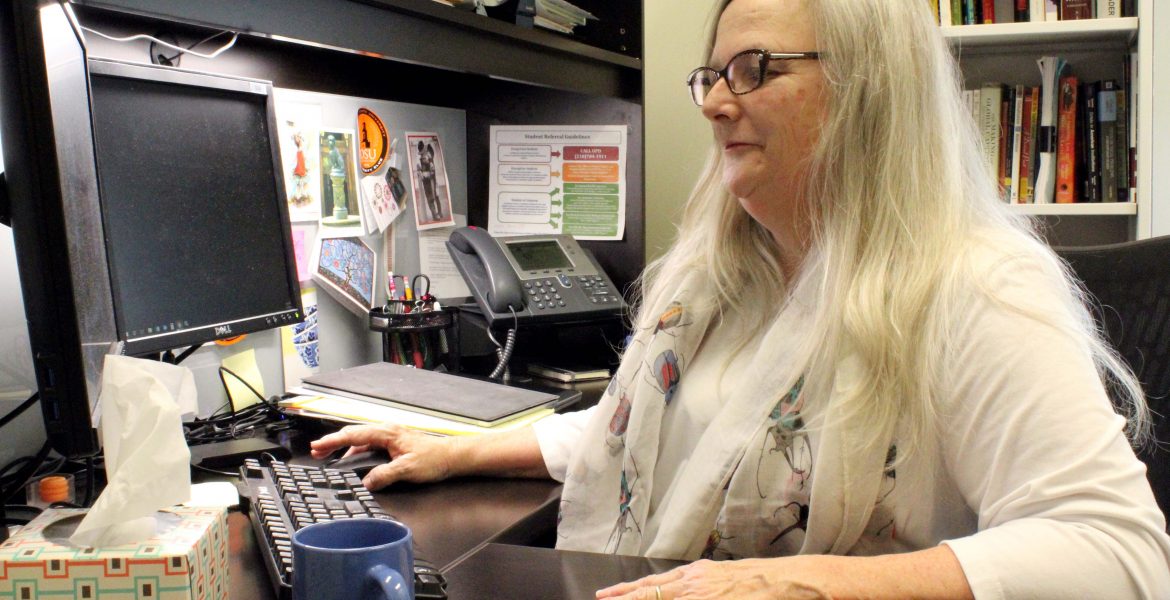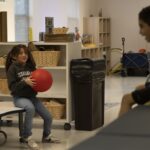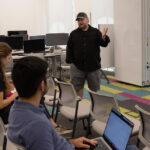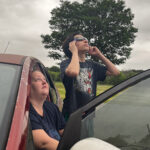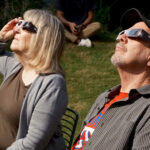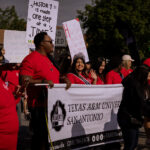February’s fatal shootings at a high school in Parkland, Florida, birthed a powerful student-led movement for stricter gun control laws, known as the March For Our Lives.
Across the country, teenagers have united to speak out about violence in their schools.
On Friday, April 20, thousands of U.S. high school students rallied in their cities, and San Antonio was no different. Students left classes at high schools including Churchill, South San Antonio, Jefferson, Taft and O’Connor, according to a San Antonio Express-News story April 21.
“We left our desks because they were shot at theirs,’” read a sign on a poster outside of Churchill.
What factors allowed the movement to gain so much momentum in such a short period of time? How does a young generation become the catalyst for change?
Dr. Vicky Elias, a sociology professor at Texas A&M University-San Antonio, shared her professional insight and personal connection to this tragic, yet awakening event.
“Part of what we have here … is an event that has triggered a great deal of change among that group of people [teenagers]. One of our important social theories says that there’s three ways a social change can come about,” Elias said in an interview April 5.
Out of the mouths of babes
First, when young people become the majority of a population, they can drive social change.
“We know that older people tend to be more conservative and younger people tend to be more progressive,” Elias said.
Britany Lemons, a sociology junior at A&M-San Antonio, shared her view on the Parkland movement in an interview April 16.
Lemons, who is an active member at Lily of the Valley Church, said she tries to encourage and advise the young people there to not be afraid, but to instead channel that fear into awareness.
Lemons said events such as the Parkland shooting “keep happening to innocent children and it’s not fair, and honestly I feel like not enough is being done to protect the kids.”
Elias said a significant event can profoundly change everyone in that society.
“The best example in America that most people can relate to is probably 9/11…those planes changed the way that we saw the world,” Elias said.
Finally, the cohort effect combines an event that contains certain developments and memories shared by a group of people. Alleydog.com defines it as “a group of people who share a common identity in some way.”
“All three major elements of social change are at play in that Parkland population,” Elias said of students at the Florida high school where 17 people were killed.
Elias also attributes the Parkland movement to the students’ socioeconomic and demographic backgrounds.
Elias said the neighborhood surrounding Marjory Stoneman High School is a “very affluent, wealthy, highly educated neighborhood, in a very affluent, wealthy, highly educated part of that state. These are students who from the first day they were born were told, ‘You can change the world, you can do great things, you have all of these abilities.’ They didn’t get opposing messages such as ‘know your place, just get a good job, settle down…”
This well-grounded upbringing opened a channel for these teenagers to speak in a manner that other students could not.
Another sociological perspective deals with cultural capital. If one can speak the same language of people in power and make the same cultural references, one can have conversations with them on a level other people may not be able to.
“These are students who have exactly that kind of cultural capital,” Elias said. “So now they have the impetus to change, the belief that they can change and the ability to communicate with power on a very high level. That’s just a ripe resume.”
Lemons said she has mixed feelings about the likelihood that the Florida students will make a difference.
“Yes, because they get more media play, you know, but no, because I don’t think that they are really going to make a difference honestly,” Lemons said. “[Due to] the way that the laws are set up, the government controls them so I don’t feel like they’re going to change over a protest — because if that’s the case … half the laws wouldn’t even exist.”
Strong subculture emerges
Elias said the Parkland students have social cohesion. They view themselves as a unified group and to be considered as a unified group, they have to have a shared experience and opposition. Today’s political climate motivated them to point to a group of people and attribute fault or highlight the problem.
“So you get an extremely strong connection, a true subculture … that will identify themselves as part of that Parkland movement, before even identifying themselves as Parkland students. There are Parkland students who don’t belong to that, so that indicates there’s a bit of a division, but among those students there is a cohesion that I don’t think we’ve seen since the 1970s.”
In the 1970s, there came a change in clothes, lexicon, music and values that created a “us-versus-them” mentality that allowed people to assign each other different labels. Elias said, “It became a cultural identity that brought about the kind of cohesion” of the Parkland students.
Elias said discussions about gun control are nothing new.
“The gun rights debate has been going on my whole life. It’s an old debate, but the players have changed,” she said.
The arguments, however, are still “facts based versus value based.”
She said gun ownership is a fact-based argument, based on the Second Amendment. Yet rights are ambiguous that can be changed or altered. In essence there are two groups, one arguing based on facts and the other based on values. Arguments of this kind will never be on the same page.
Lemons participated in a movement that united both young and old.
“I was a part of the Black Lives Matter movement,” said Lemons, who is African American. “My family was terrified of the cops in general, and so like every time that we would pull out and see a cop they would freak out, even the kids.
I was a part of that movement because I felt like they weren’t being held responsible for their actions, you know, and I felt like they were privileged just because they have a badge.”
Lemons works as a recreation assistant with the City of San Antonio. Lemons said she and other local members of the Black Lives Matters movement interviewed families to see how they felt and asked them how they would converse with their children and extended family members about police brutality.
Lemons praised the Parkland students for speaking up.
“I love the way they went about it. They’re not giving up; I love that. …They’re doing everything by the book, they just want to be heard and they want things to change. Especially since they were the ones affected — we’re on the outside looking in, but they actually went through it and so I like the way that they organized it — peacefully.”
However there’s no doubt that the nation is more divided today than it was years ago, when technology and means of communication were not as advanced as they are today, Elias said.
“Unfortunately… the splintering of the media and the growth of social media have taken away some of the things that jointly informed all of society,” Elias said. “Walter Cronkite [a news anchor in the 1960s] had it easy because he came on every evening and could count on a third of America hearing what he had to say and know that the other two news anchors would roughly be saying the same thing.”
This created a sense of unison in America and allowed Americans to be under the same umbrella of information.
However in today’s day and age, several news outlets each portray a different view. Elias said today people can choose a source that will echo back what they want to hear. This reinforces beliefs they already have and creates more opposing groups and weakens the cohesion, the ties that once kept us unified.
Elias said the Parkland students were not so united the day before the shooting; they had divisions. But the day after the shooting, everything changed.
This same pattern repeats itself in America. Elias noted Pearl Harbor as an example. The day before, there was discord in America because of the war. The day after, Americans were unified.
“But it took Pearl Harbor!” Elias said. “Do we want to put ourselves in a position where we need another Pearl Harbor in order to come together?”
Story hits close to home
Elias shares a personal connection with the Parkland shooting. Her oldest son lives very close to Marjory Stoneman Douglas High School, and although his two sons do not attend the high school, they were still affected.
Before the shooting, most of his son’s friends would usually walk home from school and wait for their parents to arrive from work. Instead this routine broke that Wednesday afternoon as many of his son’s friends came pouring into his own home.
Elias said, “I cannot speak on behalf of my son, but from what I conclude, I sense that this feeling of helplessness and fear overcame him once again.”
She said her son was in New York during the 9/11 attack. An artist, he was across the harbor on top of a building, painting a cityscape and saw it all, which led to the first sense of helplessness.
A few days after the Parkland shooting, her son had gone for a run in a park between his house and Parkland and ended up talking to a police officer who began to vent and was close to tears.
“Again there was this sense of unreality. How could this happen? Why can’t we do anything to stop this? Again this sense of helplessness,” Elias said.
However, her son and others in the community gained strength from seeing the teenagers unite and lead the first march outside their high school.
“My son watched it. Seeing those students do something was very healing, not just for them, but all of the people sitting at home saying ‘someone needs to do something about this but I don’t have the power to and seeing the students take that power was important.”
Elias said she remains optimistic about the student-led movement.
“For me, I see a lot of hope in [this] movement,” she said. “No change has occurred without some controversy, but someone speaking truth. Someone who is able to speak that truth and be heard.
“I shudder to think about the potential backlash, and I shudder even more to think about what it would take to bring everyone together to look at this as a unified whole instead of as individuals. Those scare me. But it would scare me even more if the students were not doing what they’re doing.”

